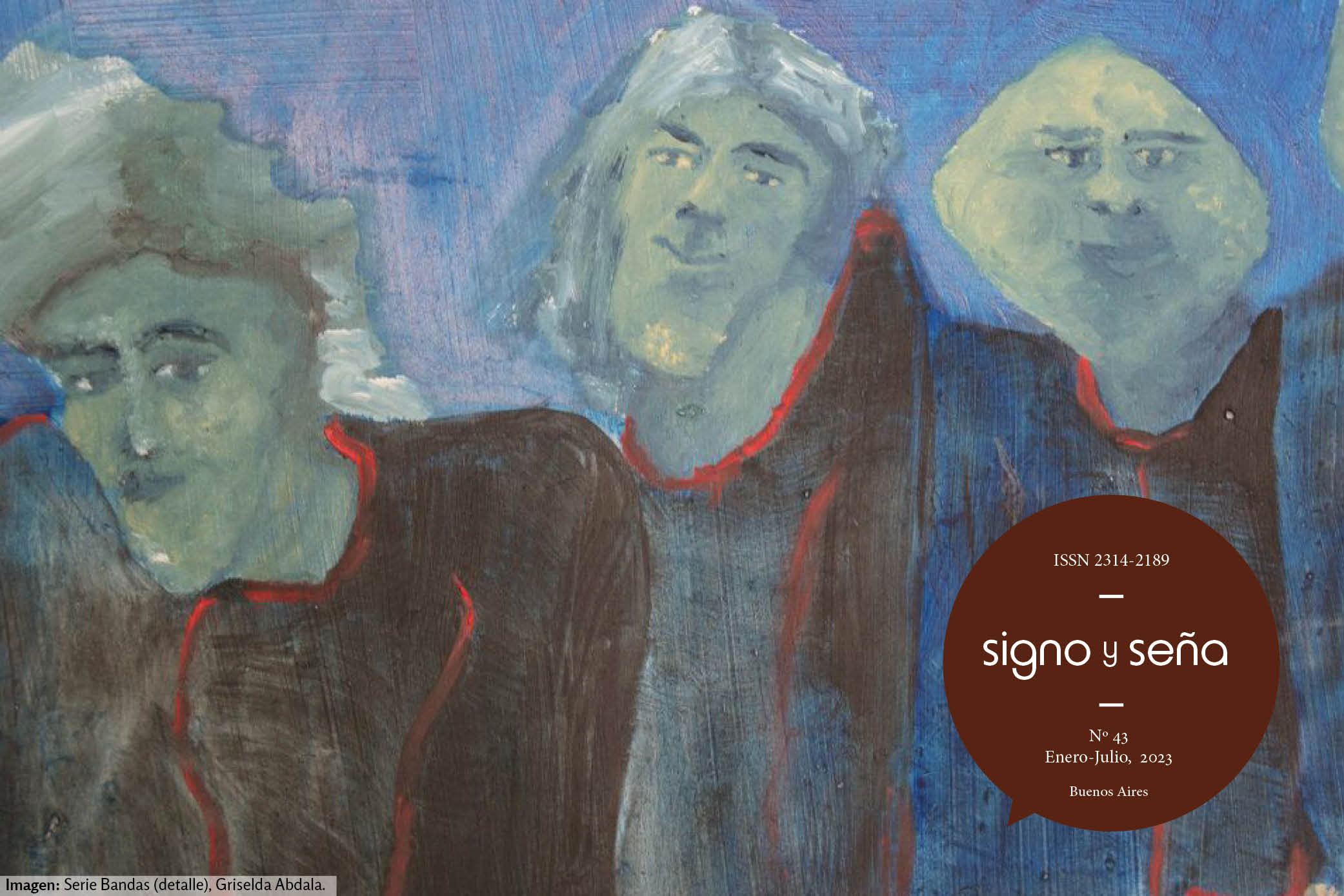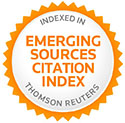Scientific (dis)affiliation: Dino Jarach and his work as translator and disseminator in Argentina of the “first Italian school of financial law”
Abstract
The links of intercultural mediation in the field of Economics and Finance through translation are often not sufficiently highlighted in the Argentine context. Dino Jarach's translation of Benvenuto Griziotti's Principios de Ciencia de las Finanzas, from the original Italian second edition, constitutes a fundamental milestone for the consolidation of this theory of financial law in Argentina, as well as a platform for Jarach's own ideas and conceptions, disseminated in his publications and university lectures. In this article, the focus will be on the figure of Dino Jarach, as translator and author. The analysis of some paratexts (notes, prologues, prefaces and other texts that are proposed to be included in this category) and of certain metadiscursive resources attempts to demonstrate that the recognition of the intellectual debt contracted with his master does not translate into a mere reproduction of the ideas developed at the Pavia School. The results suggest that, both in his role as translator and writer, Jarach exhibits an original identity profile, defined by a strong theoretical, pedagogical and socio-political commitment to Finance and Tax Law.Downloads
References
Alvarado, Maite. 1994. Paratexto. Buenos Aires: Universidad de Buenos Aires, Cátedra de Semiología y Oficina de Publicaciones.
Amigo, Ruben Oscar. s/fecha. “Homenaje a Dino Jarach en el centenario de su natalicio”. Fecha de consulta: 17.05.2022. https://archivo.consejo.org.ar.
Bastin, George L. y Marc Pomerleau. 2017. “La traducción especializada en la historia de la traducción y de la revista Meta”. Sendebar 28: 9-30.
Ciapuscio, Guiomar E. 1994. Tipos textuales. Instituto de Lingüística. Facultad de Filosofía y Letras. Universidad de Buenos Aires. Cátedra de Semiología y Oficina de Publicaciones.
Ciapuscio, Guiomar E. 2021. “Géneros textuales y tipos de discurso”. En Manual de lingüística del hablar, editado por Angela Schrott y Óscar Loureda, 541-558. Berlin/Boston: Walter de Gruyter. https://doi.org/10.1515/9783110335224.
Donaire Fernández, Ma. Luisa. 1991. “(N. del T.): Opacidad lingüística, idiosincrasia cultural”. En Traducción y adaptación cultural: España-Francia, editado por Ma. Luisa Donaire y Francisco Lafarga, 79-91. Oviedo: Universidad de Oviedo.
Hernández Sampieri, Roberto, Fernández Collado, Carlos y Baptista Lucio, María del Pilar. 2014. Metodología de la investigación. México: McGraw-Hill.
Hyland, Ken. 1999. “Talking to Students: Metadiscourse in Introductory Coursebooks”. English for Specific Purposes. An International Journal 18.1: 3-26.
Hyland, Ken. 2005. “Stance and engagement: a model of interaction in academic discourse”. Discourse Studies 7.2: 173-192.
Hyland, Ken. 2017. “Metadiscourse: What is it and where is it going”. Journal of Pragmatics 113: 16-29.
Kockelman, Paul. 2013. Agent, Person, Subject, Self. A Theory of Ontology, Interaction and Infrastructure. Oxford/New York, etc.: Oxford University Press.
Lombardini, Hugo Edgardo. 2014. Gramáticas para la enseñanza del español en la Italia del siglo XIX: El caso de Francesco Marin. Salamanca: Ediciones Universidad de Salamanca.
Müller, Gisela E. 2007a. “Metadiscurso y Perspectiva: Funciones metadiscursivas de los modificadores de modalidad introducidos por como en el discurso científico”. Signos 40.64: 357-387.
Müller, Gisela E. 2007b. “Adverbios de modalidad epistémica y evidencialidad en artículos de investigación y conferencias académicas. Funciones metadiscursivas y aspectos cognitivos”. Romanistisches Jahrbuch 58: 329-364.
Müller, Gisela E. 2021. “El discurso científico-académico”. En Manual de lingüística del hablar, editado por Angela Schrott y Óscar Loureda, 677-698. Berlin/Boston: Walter de Gruyter. https://doi.org/10.1515/9783110335224.
Nuyts, Jan. 2007. “Modality: Overview and linguistic issues”. En The Expression of Modality, editado por William Frawley, 1-26. Berlin/New York: Mouton de Gruyter.
Petriella, Dionisio y Sosa Matiello, Sara. s/fecha. Diccionario Biográfico Ítalo-Argentino. Asociación Dante Alighieri de Buenos Aires. República Argentina.
Revista del Colegio de Traductores Públicos de la Ciudad de Buenos Aires. 2008. “Los antecedentes del proceso de colegiación”. Revista cTPcba 90 (marzo-abril), 8-11. Sin firma de autor. Buenos Aires: Instituto Salesiano de Artes Gráficas.
Revista del Colegio de Traductores Públicos de la Ciudad de Buenos Aires. 2013. “Los hacedores del Colegio que ya no están”. Revista cTPcba 113 (edición especial), 5-7. “Historia del Colegio: un largo camino pleno de historias y recompensas”. Revista cTPcba 113 (edición especial), 8-29. Sin firmas de autor. Buenos Aires: Instituto Salesiano de Artes Gráficas.
Ribelles Hellín, Norma. 2003-2004. “Las notas a pie de página en las versiones al español de las novelas de Patrick Modiano: “La honte du traducteur”?”. Anales de Filología Francesa 12: 385-393.
Schrott, Angela. 2021. “Las tradiciones discursivas”. En Manual de lingüística del hablar, editado por Angela Schrott y Óscar Loureda, 499-517. Berlin/Boston: Walter de Gruyter. https://doi.org/10.1515/9783110335224.
Taylor, John R. 1995. Linguistic categorization: Prototypes in linguistic theory. 2. ed. Oxford: Clarendon Press.
Zaghloul, Ahmed Kamal. 2011. Las notas a pie de página en la traducción del Corán. Entreculturas 3: 17-36.
- Authors keep the copyright and give the journal the right of the first publication, with the work registered with the Creative Commons Attribution-ShareAlike 4.0 International License, which allows third parties to use what is published whenever they mention the authorship of the work and the first publication in this magazine.
- Authors can make other independent and additional contractual agreements for the non-exclusive distribution of the article published in this journal (eg, include it in an institutional repository or publish it in a book) as long as they clearly indicate that the work It was published for the first time in this magazine.
- Authors are allowed and recommended to publish their work on the Internet (for example on institutional or personal pages).

















